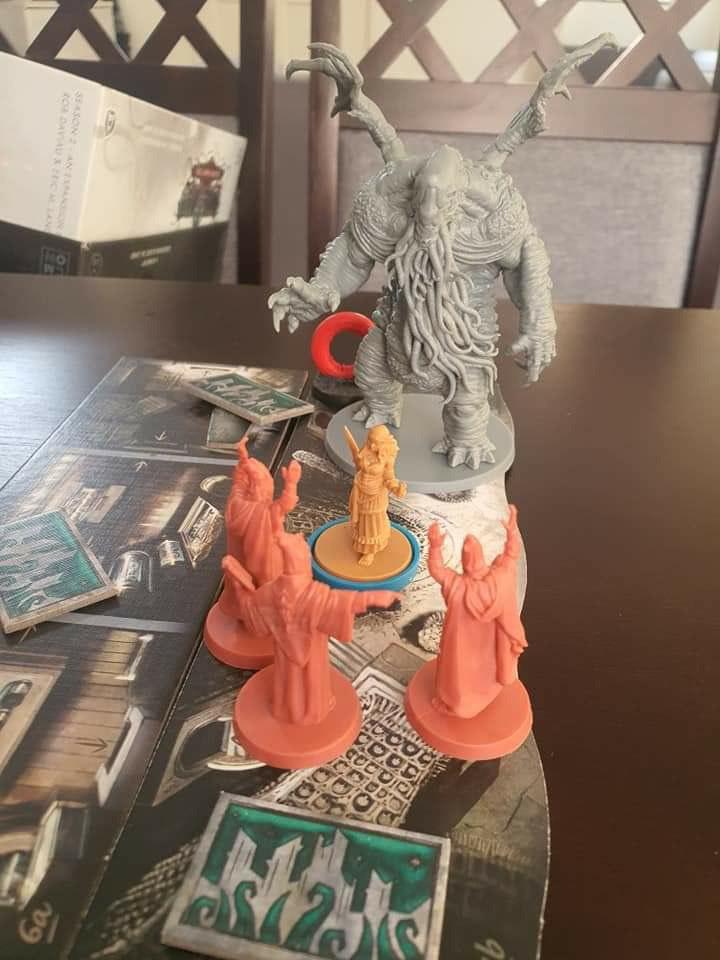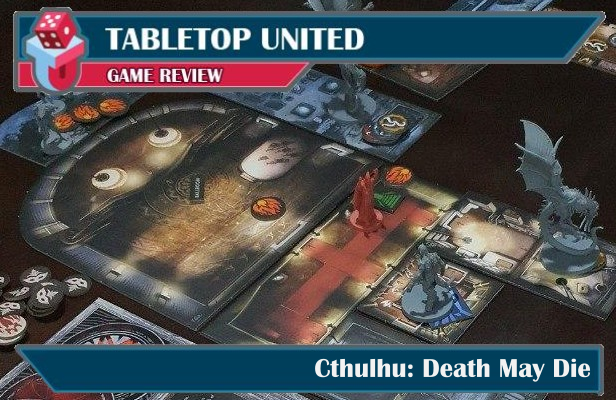 Cthulhu: Death May Die
Cthulhu: Death May Die
Designer: Rob Daviau, Eric Lang
Artist: Nicolas Fructus, Karl Kopinski, Edgar Skomorowski, Adrian Smith, Richard Wright
Publisher: CMON Limited, Guillotine Games, Asmodee, etc.
Year Published: 2019
No. of Players: 1-5
Ages: 14+
Playing Time: 90-120 minutes
Main mechanic / Theme: Cooperative, Dungeoncrawl, Survival / Lovecraftian Horror
Elder Ones…Up Close and Personal
When Elder Ones enter our realm, you have only one choice --- fight fire with fire. Cthulhu: Death May Die (CDMD) is an episodal dungeon crawling game that lets you play as Investigators in 1920 Arkham, Massachussets. Your objective is to try and stop cultists perform the ritual that will summon an Elder One.
Emphasis is on the word "try".
Find more info on Board Game Geek.
Find more info on Kickstarter.
Find more info on their official website.
Overview:
Most Lovecraftian games (Arkham Horror, Eldritch Horror, Mansions of Madness, Elder Sign, etc.) usually provide you that feeling of a horror looming that’s about to be sprung. CDMD is different. The Elder Ones are no longer on the fringes and they are being summoned to our plane of existence. To thwart the summoning of Elder Ones, your character must grow stronger by embracing their own insanity.
CDMD is heavily story-driven and has a good amount of narratives to immerse you in 1920s Arkham. Mechanically, it uses several game mechanics that stimulates the mind into problem solving situations. As expected from a CMON game, the miniatures are beautifully-detailed and the accessories are top notch.
A huge bonus for this game is that you can play this on your own. The game was designed with solo gaming in mind and it scales up or down properly based on the number of players.
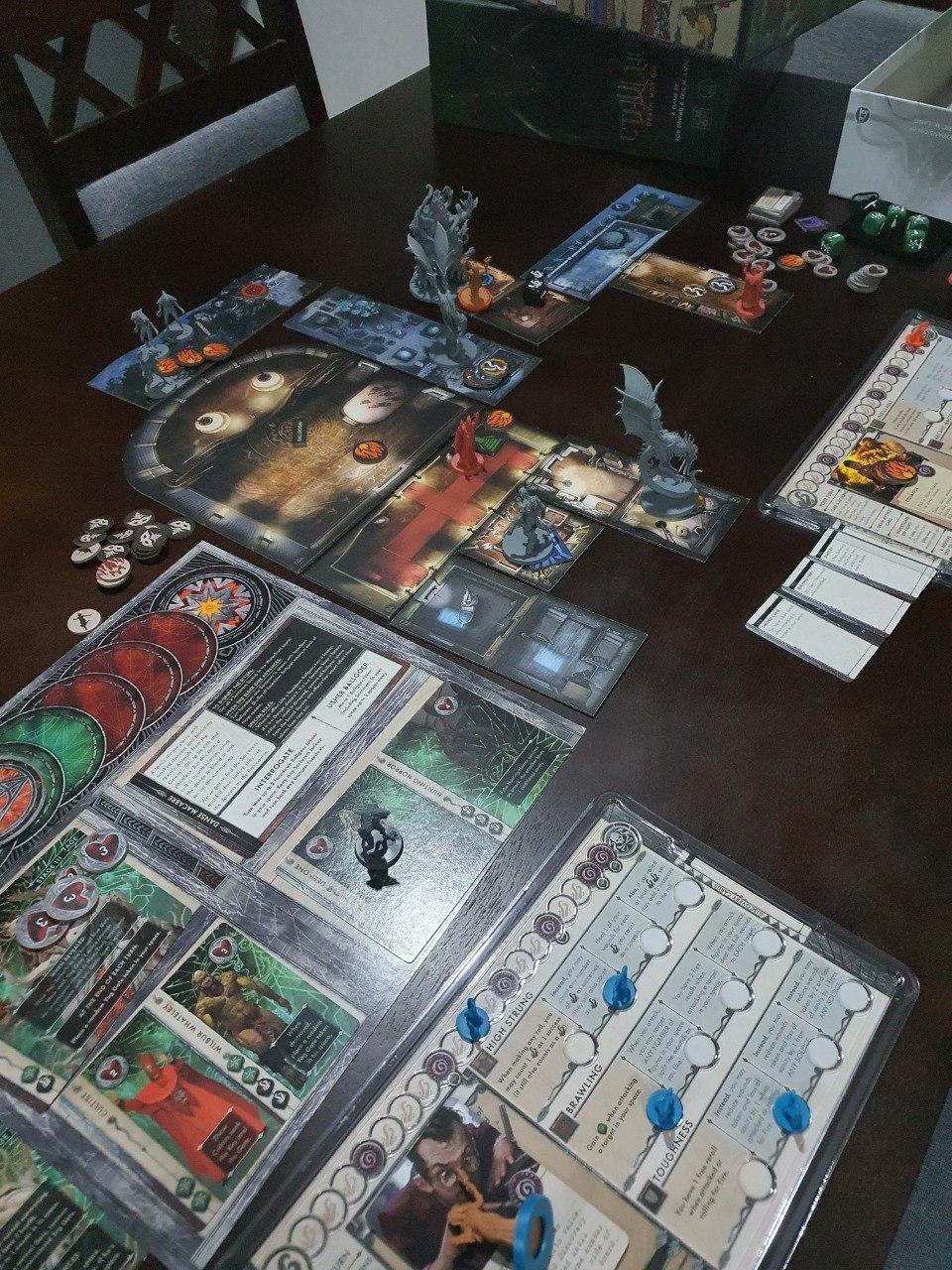
Gameplay and mechanics:
To set up: Choose your investigator/s. Select the Episode. Pick the Elder One you want to go up against. Prepare the board based on the scenario and Elder One.
The objective of each scenario is to disrupt the ritual which is different for each Episode. At some point, the Elder One will be summoned and the Investigators must deal enough damage to defeat it. If the Elder One appears with the ritual not yet disrupted, Investigators can’t harm the Elder One.
Players take turns going around the board to either kill enemy characters (cultists and monsters), pick-up items or disrupt the ritual. How one disrupts the summoning is different for each episode. One episode may require you to collect items while in another you may have to interact with certain board pieces.
Investigators have three abilities, one of which are unique to that character. Thus, offering a different gaming experience from one gaming session to the next. Each ability can be “levelled up” by increasing your character’s Insanity level but there’s a limit. If a character’s Insanity reaches maximum, they have gone insane can no longer participate further.
Another way to level up your character is by acquiring items or companions. When you get the chance to investigate, you get to draw from the Discovery deck. Each card provides a narrative and a choice of what upgrade you will get. Sometimes, these cards are instrumental to the scenario.
As if this is not enough, each Investigator must draw a random Insanity card at the start of the game. Examples of these Insanities are Masochism, Kleptomania and Hypochondria. These cards add another level of complexity to your game which, for some, is very appealing.
Skill checks and attacks are performed using specialty six-sided dice (try not to lose them). By default, you use three dice but as you gain more experience and increase your ability or Insanity, you add more dice. With more dice, you have a much bigger chance for success or larger damage. A unique game mechanic is the ability to re-roll any number of dice by “Stressing” your character.
The players will have to work together against board threats which usually come from enemy characters. An Encounter deck provides the AI (artificial intelligence) for these adversaries. In addition, each Episode and Elder One have their own unique game effects.
The Core Box contains two Elder Ones (Cthulhu and Hastur), six Episodes, ten Investigators and eight Insanity Cards. With this alone, you will have a good enough replayability. If you wish to increase your gaming experience, there are a few expansions available such as Season 2, the Unspeakable Box and the Black Goat of the Woods (Shub-Niggurath).
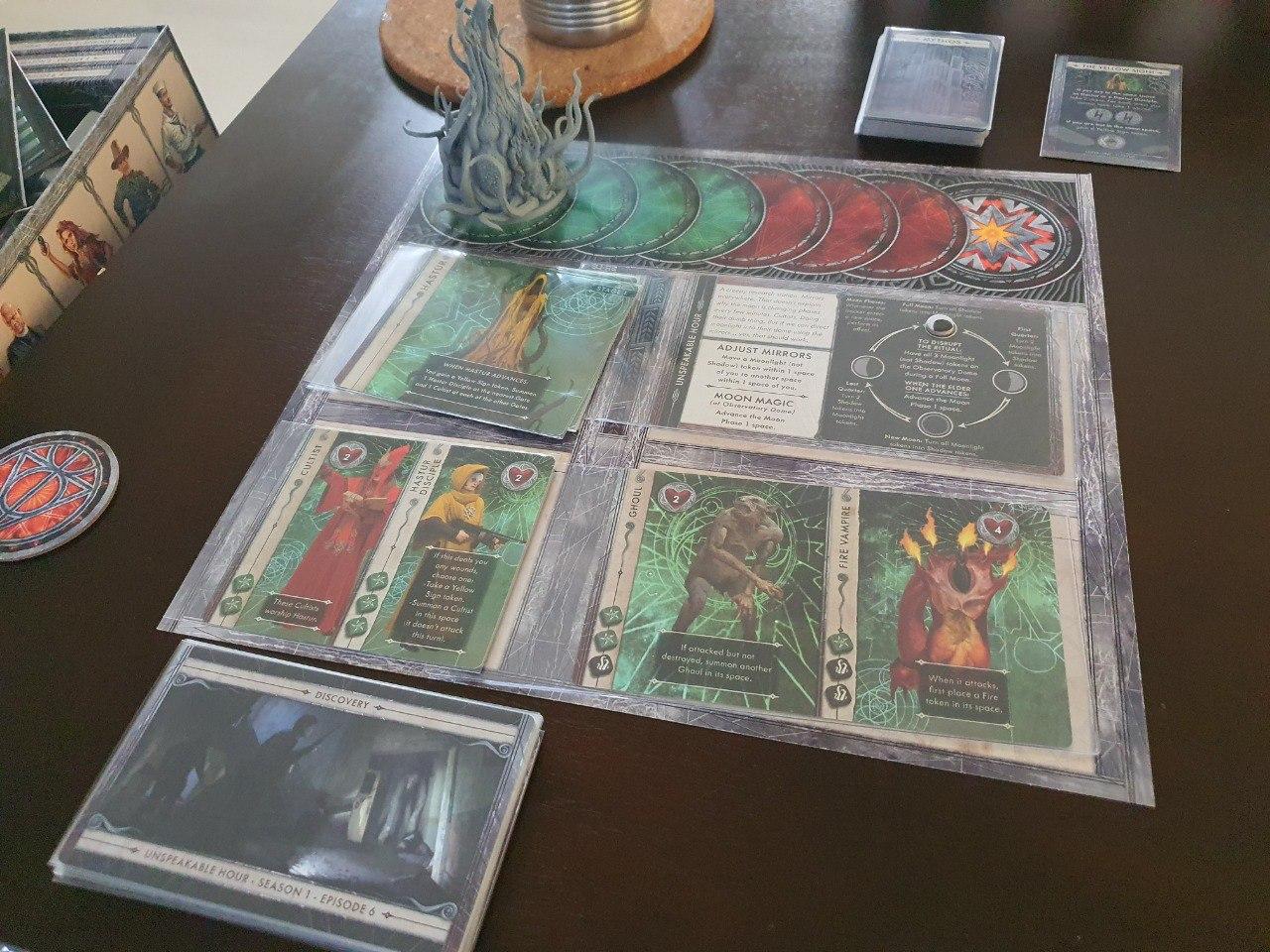
Theme, Artwork and Illustration, Graphic Design and Layout (optional)
Amazing artwork from well-established artists. From the character portraits to the board game tiles, the artwork transports you back to the streets of Arkham in the 1920s. As far as I know these are all original art meant for this game.
The Investigator board is well designed, allowing players to easily manage their character's progression such as Insanities, abilities and item cards.
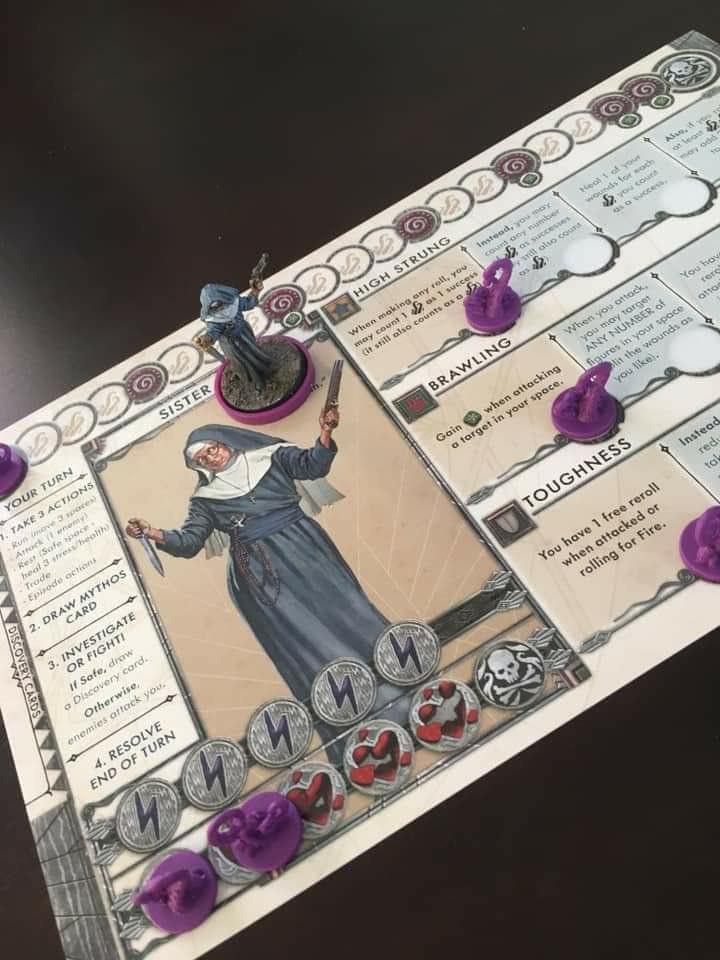
What worked:
For each of the gaming experiences below, I will rate them using 5-point rating with 5 as “Very Good” and 1 as “Very Bad”.
Set-Up: 4 (Good)
The Core Box contain smaller boxes that are meant to keep the individual Episodes and Elder Ones, as well as the corresponding board game pieces such as miniatures and tokens. You don’t have to rummage through all the box components in order to find what you need to start playing.
However, you might find the map tiles a little annoying as you will have to look at the exact map as stated in the Episode set-up card. In addition, you will find that these map tiles will move around many times when playing especially if the players become overly excited.
Rules: 5 (Very Good)
The Rulebook is very straight forward and provides both visual and text examples. You can even set up and play your first game by following the Rule Book. The back of the Rule book gives a good summary of the symbols and mechanics. Each of Investigator board also has a “Turn Summary” which serves as a good way to go through each player’s turns. Once you played 2-3 games, you will have little need to look at the Rulebook.
Difficulty: 5 (Very Good)
I consider complexity to be good in games, especially if it gives you a Win Ratio of about 25%. Games like these creates a suspenseful atmosphere that can explode into high-five moments for you and your friends. This complexity does not diminish as you add more players in the game. The game was designed to scale up (or down) to provide the same Lovecraftian Horror experience.
Lore/Narrative: 5 (Very Good)
For readers of H.P.Lovecraft’s books, there are plenty of words and situations that will take you back to his original literary works. At the same time, the game designers have installed names and scenarios that are new but still fall within that same 1920’s dark horror genre. If you take time to read all the narratives provided in all cards, then you will definitely transported to Arkham and right in the middle of the danger.
Gaming Pieces: 4 (Good)
CMON has a reputation of producing finely-detailed plastic miniatures and they do not disappoint with CDMD. The tokens and board game tiles are wonderfully made and sturdy enough to withstand some wear and tear.
A downside is that the game pieces are unique for this game that if you lose or damage any of them, you will have a hard time replacing them. Furthermore, you will often cramp several miniatures in a “room” which signifies some failure of proper scaling the locations to the miniatures. I’ve had games that have specific map tiles overflowing with miniatures, particularly when the Elder One decides to join in the fight.
Tear-Down: 5 (Very Good)
There are compartments and tuckboxes that makes storage easy. Each miniature even has their own appropriate storage slots, accompanied with a nifty diagram as to where each one goes. Not only does this make the game easy to stow away, you can effortlessly check if you are missing any bits.
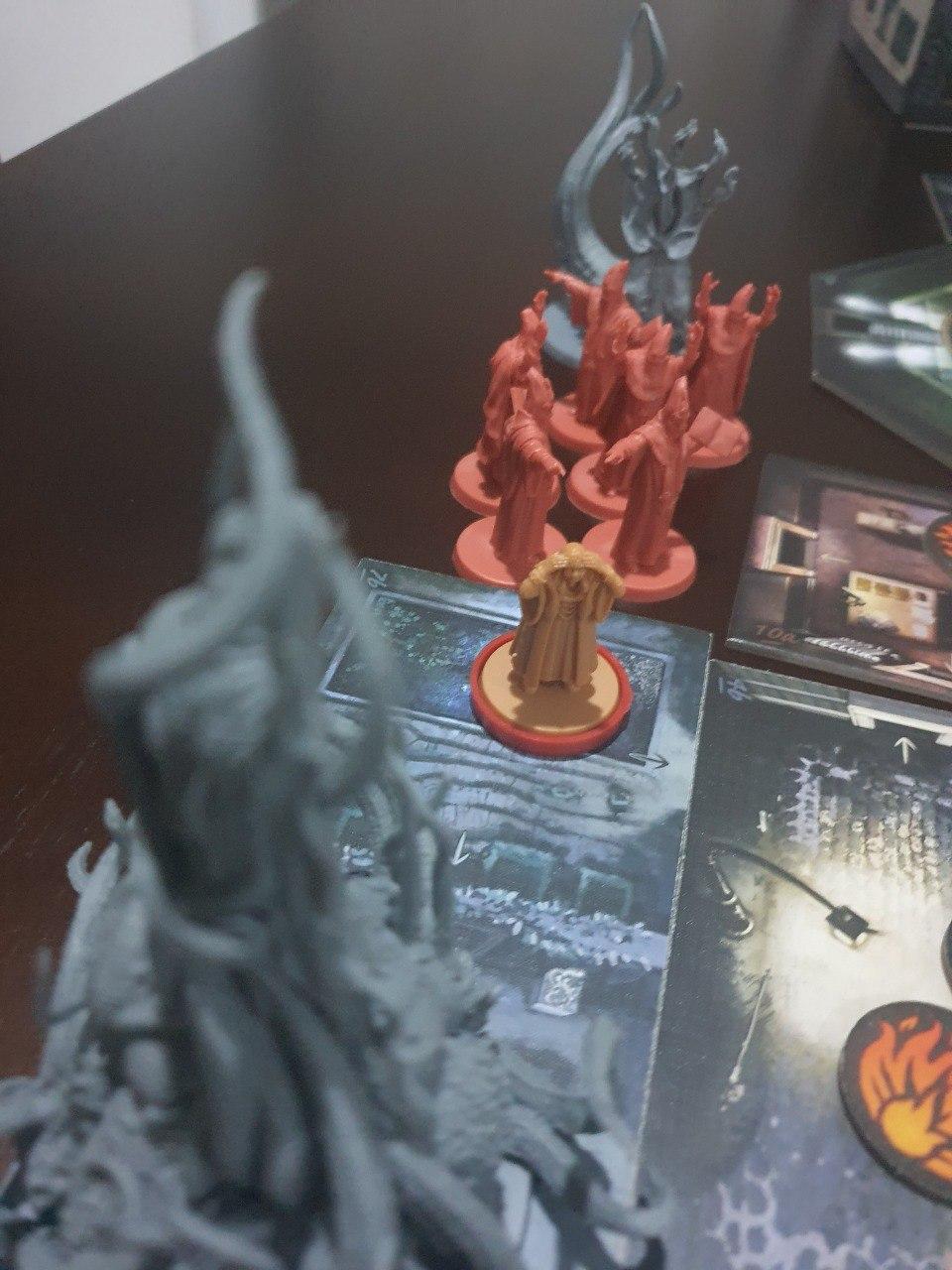
Final thoughts:
Fans of Lovecraft will enjoy this game as you get to “try” to fight off Elder Ones. A complete table set-up may look complex but it really follows a simple turn sequence. However, to win a game of CDMD can be difficult…but what do you expect from Cthulhu and his fellows?
